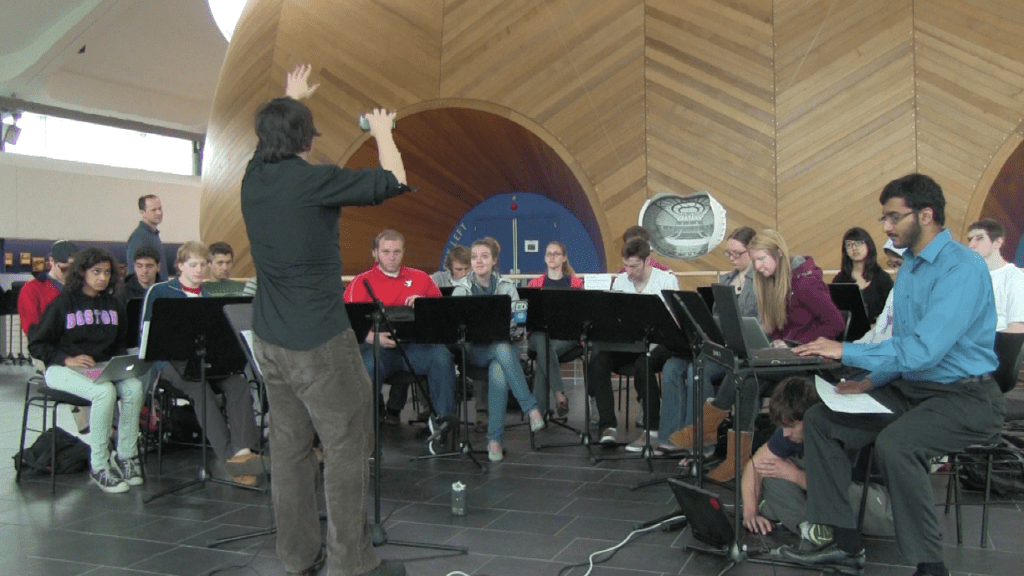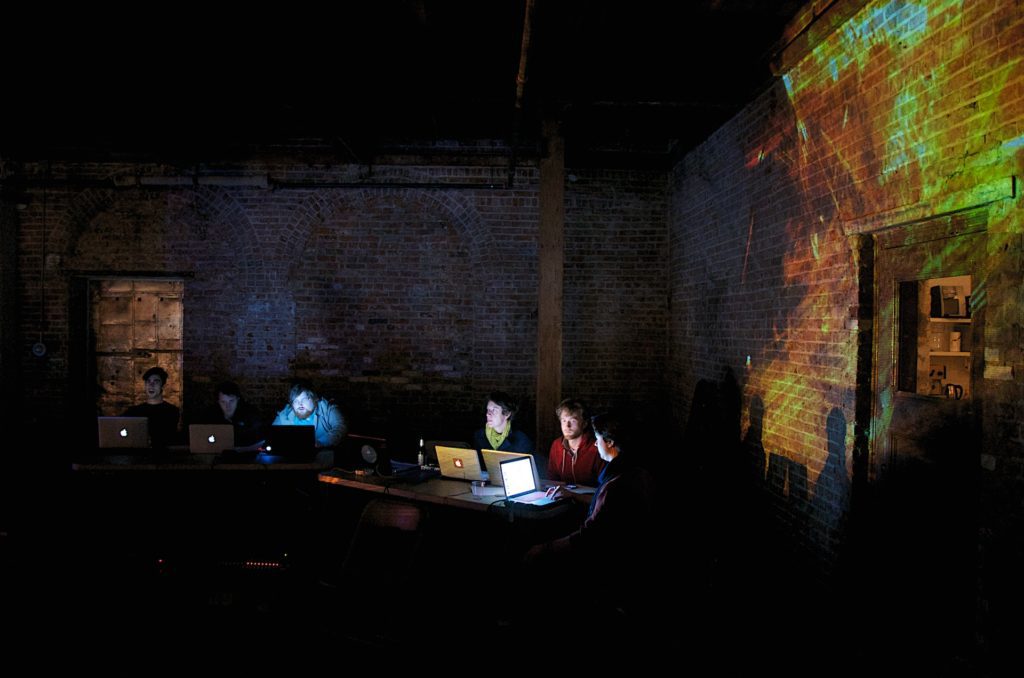Genetic Orchestras (2007-13)
The basic premise of these “laptop orchestra” pieces is that participants somehow rate sound files and more “fit” members of the population are chosen for “mutation” (sound alteration) and “mating” (juxtaposition or morphing of sonic material). Using this genetic algorithm process I have developed a scheme in which performers-turned-sound-mutators rate files which are then selected through an algorithmic process based on the cumulative fitness ratings. In the set of works this evolutionary paradigm is directed by compositional rules, including the nature of the beginning “gene pool” and the type of mutation/crossover. At the same time, the process directs the structure of the score itself, determining the number of sections, number of players in this section, which sonic “generation” each player can draw from and so on. Within these confines, the performance is improvisatory, drawing on each epoch of the evolved sonic gene pool. In this way, there are actually two pieces to speak of: the first is the process and experience of creating this pool — where the participants experience their own sounds and mutations interacting with other players over time. This is an anonymous process where identities and dialogues are formed completely through the digital media. The second piece is the performance and score, when this entire multiple day-or-week process of the pool’s unfolding is collapsed into 20-40 minutes of a performance. Each performer at this point has an intimate understanding of the material, and modulates this pool in attempt to convey this process to a new audience. These series of pieces are collectively titled “Genetic Orchestras”, generally being named “X Genetic Orchestra” where X is the name of the ensemble. There currently exist seven pieces in the repertoire, which have been performed on at least eight occasions, including the International Society of Improvised Music conference in 2007, in performance with the Florida Electronic Arts Ensemble (FLEA) directed by composer Paula Matthusen at several festivals in the Miami area, and by students groups at universities including RPI.
The very first piece was commissioned by the Deep Listening Institute for the “Deep Listening Convergence” event in June of 2007, which brought together 40+ musicians over the internet in a six-month long “virtual residency”, before the final convergence of performances. As such this version is titled “Deep Listening Convergence Genetic Orchestra” or, DLCGO. This version was special not only because it was the first, but because we evolved the piece completely over the internet, and over such a long time period. The recording of the premiere performance was presented on the CD compilation “Listening for Music Through Community” released with the 2009 Leonardo Music Journal. Here is a recording excerpt from DCLGO.
Many version have been performed, such this one in the lobby of EMPAC:

The Toneburst Ensemble at Wesleyan (directed by Paula Matthusen) performed a version that I named ToneGO at the SHARE NYC event in Brooklyn. This is the first piece to include the GA process applied to video – with some really striking results.

For this series of pieces, I’ve created a simple piece of software that was designed with the intention of allowing players to loop and mix the sound files while independently changing the pitch or timbre. This also allows players to tap in a tempo and to change the character of the sound in simple but uniform ways. This application has become a central part of the pieces, allowing me to compose for the software instrument as well as for the process.